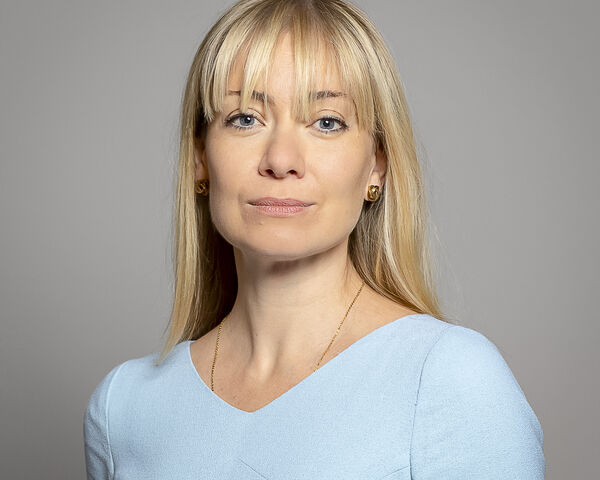Twenty years on from sequencing the first genome

In this opinion piece, Chris Wigley, CEO of Genomics England, shares his reflections on the 20th anniversary of the first genome to be sequenced.
Not for a century has the world witnessed a pandemic on anything approaching the scale of COVID-19. Millions have been infected, almost half a million have died, economies have been shut down, jobs lost, schools closed, families divided, and civil liberties restricted to levels unknown outside war time. As the UK cautiously tip toes out of lock-down, the virus continues to wreak havoc around the world. While we can manage risk, few believe the scourge will be fully conquered without the development of an effective vaccine.
The search for a vaccine is already underway, with researchers from China, the US and Europe racing against time to deliver a response. Even when such a vaccine is available, however, a crucial factor in combating the virus’ deadly impact will lie in determining those who need it most, those who, for whatever reason, are most at risk. That will not be easy.
COVID-19 is not uniform in its impact. For all too many it has proved deadly yet for others its impact has been negligible. But why? Some correlations are clear, related to factors such as age, underlying health conditions, living standards or ethnicity for example. But for the moment they are just that, correlations – associations, not causes.
The key to cracking the conundrum lies in the science of genomics. Twenty years ago today the multinational Human Genome Project team announced that they had sequenced the human genome. They output was a diagram of every single gene, every letter of DNA within the human body.
It was, rightly, hailed as an amazing breakthrough. Bill Clinton described it as “the most wondrous map ever produced by humankind”. Scientists dreamed of the benefits that would accrue; of treatments for conditions such as cancers, Alzheimer’s, cystic fibrosis. Such treatments could be tailored to individual needs – a kind of made-to-measure medicine.
But much work remained to be done. Each genomic map was unique. What was needed was not one map, but hundreds of thousands, even millions across the world. Such a data base would allow scientists to look for fractional differences between the maps. Groups with genetic differences and medical conditions in common would suggest an evidential link between the two. The bigger the data base, the more anomalies could be spotted, the stronger the evidence.
In July 2013 the then prime minister, David Cameron, set up Genomics England. The aim was to make more data available to health professionals, academics and others, support their research work and encourage the translation of their results into front line health care. To turn science into healthcare, using technology. One of our flagship projects was to boost the UK data base by sequencing 100,000 whole genomes. In 2018 the target was lifted to 1 million with an ultimate goal of 5 million within five years.
While more data means stronger evidence, it has also increased the importance of being able to effectively interpret those data. That requires an alliance of data collection, bioinformatics and advanced analytical techniques like machine learning. But above all it requires the willingness of patients to knowingly and willingly provide the data on which the whole science of genomics rests, and ideally to engage with the research that results. For instance at Genomics England, the participants in the programme engage with the research being done using their (and other) data, and their representatives sit on the Access Review Committee for all research projects. We’re grateful for their time and expertise.
The arrival of COVID-19 has provided an added spur to our efforts. We are hard at work building up more evidence of what determines the severity of a person’s response to COVID-19. To do that, we need to examine the genomes of folks who respond really badly to the disease, and those who respond unexpectedly well (indeed, may have no symptoms at all), and compare them with the wider population.
In partnership with the NHS, the GenOMICC consortium and Illumina, we are therefore collecting and analysing the data from up to 20,000 patients who needed intensive care treatment as a result of contracting COVID-19 and up to another 15,000 who were either mild responders or asymptomatic.
The work will look at the varied effects of COVID-19 with the aim of identifying those most at risk and helping to fast track new therapies in clinical trials. If you have had COVID-19, either severely enough to be in intensive care, or mildly enough to only have modest if any symptoms – we’re looking for volunteers: go straight to our sign up page.
Twenty years ago, the researchers who manually wove that gargantuan tapestry would have gaped at the idea that we could sequence hundreds, even thousands of genomes at a time, or that those data could in a matter of weeks be available in secure workspaces for researchers around the world. The advances in technology and science, and the reduction in cost and time of sequencing, have powered a revolution over the last couple of decades. COVID-19 is now forcing another evolution, some might say revolution: driving us with ever greater urgency to deliver predictive, prescriptive and personalised health care. To bring the benefits of genomic medicine to everyone.


